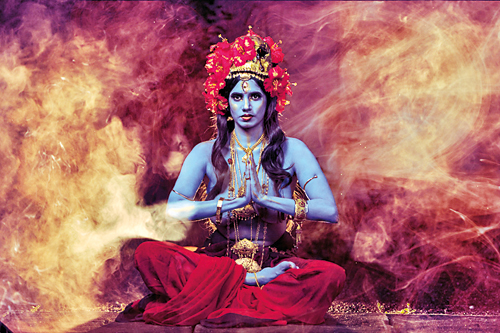The one that got away – Tai Hsin Shiek
Tai Hsin Shiek’s parents wanted him to become a doctor; but as he couldn’t stand the sight of blood, he went with software engineering instead. He then got into technical writing, quality assurance, business analysis – ‘but it was not my thing.’ So at the age of 28 he thought, why not try photography?
He did some social media work ‘for exposure’, as a form of on-the-job training, ‘and then I found out exposure doesn’t pay the bills.’ He wanted to get into wedding photography, and attended a workshop conducted by CameraLK. Someone suggested he help out on a homecoming shoot in Kurunegala, and when he got there Shiek found he was taking pictures of the happy couple.
He was a little daunted by the enterprise, ‘til one day Dylan Seedin [‘The One That Got Away’, Sunday, Times, August 30, 2020] called to offer him a job, impressed by what Shiek had achieved with (bad) light at a particular event. He subsequently worked with several other photographers in the wedding field – and then went solo in 2015.
Since then he’s shot more than 100 weddings, alongside a range of commercial work for JAT Holdings, MAS/Brandix, Hilton, RM Perera furniture designers, and others. Most recently he did the stills for an ad campaign featuring Lasith Malinga.
The one that got away
‘I decided I was going to take a picture of the Milky Way.
I’d done my research. A full professional-level camera, and a good lens. A D750 Nikon, and a 24-70mm f2.8. About 2.5 lakhs each, and then the tripod, and a wired trigger for the long exposure, so I don’t jiggle the camera. Everything is by the book. I’ve made sure to turn off the optical stabilisation.
I’d spent at least a month rehearsing settings and timings, in my house, in Ratmalana – taking pictures maybe every other night – so that when I go to the place I have in mind I can just get the shot. I was learning about basic astronomy, as well as night-time photography: I even joined an astronomical club! So everything is prepared. This is going to be the shot.
There’s really only a small time-slot when you can get this picture. ‘Night-time’ isn’t good enough. The position of the Milky Way will move, and because the earth is spinning you can’t make the shutter speed too slow, or you get blurs. And if it’s too fast you don’t get enough light to create the image.
The day finally came. It was a three-day weekend, a bunch of friends just going on a fun trip to a tea estate near Haputale, to chill out and drink, and I just tagged along because the opportunity came up. I was very excited: “OK. Let’s do this!” And off we went.
The estate is on a hill, and basically at about 12 or 1 all the electric lights went off in the whole place, and so everything above the town down in the valley is completely dark. On the second day I set up, and everything is perfect, and night falls, and I go outside – this is the moment! – and it’s all lit up.
Only then I realised that it’s a three-day weekend because it is a poya. The moon is full, the sky is clear, so there’s light everywhere. The image was just white fog. You couldn’t see anything. And I’d gone all that way for this. It was a total fail.
I think I was just too excited: I’d been so focussed on all the practical requirements. Trial and error is all well and good; but it’s a painful way to learn from your mistakes!’
The shot that he got
‘This is from a passion project that I had in my mind a long time back; but it’s very difficult, and no-one wants to fund it. A major international photographer like, say, Benjamin Von Wong has commercial budgets, and a massive following. But I had to start a bit smaller.
I’d been shooting the Lanka Comic Con for the last two-three years, and all these cosplayers are using their own money, as well as time and effort. I was thinking maybe I could do something, contribute my skill, to make sure these guys at least have good pictures they can post online.
So in 2019 I went with a booth and a full lights set-up, and just said to everyone that they could get their picture taken free. I met a lady called Opula (Fonseka), who does a lot of special-effects makeup – prosthetics and all that – for short films and photoshoots. She had created this totally amazing Demogorgon costume, from Stranger Things.
Then there was another lady called Deepthi (Jayasinghe), whom I met through a talkshow called ‘Shhh…’. She talks about uncomfortable topics, taboos, etc. And she’s a very forward, demonstrative person. We just synced, the three of us – so I said we have to do something together.
And this was the final picture. It took about 10 or 11 hours for Opula to dress Deepthi, with two weeks of planning and preparation beforehand. The central concept is a Sri Lankan depiction of the Hindu goddess Kali – that representation of the fearlessness, the feminine energy in all of us (Deepthi explains it very nicely!). The project was titled ‘ALPHA’.
Ultimately, I’d really like to have an exhibition of these things, to show that in Sri Lanka we have people with this kind of talent.’

‘The ALPHA female’ by Tai Hsin Shiek


